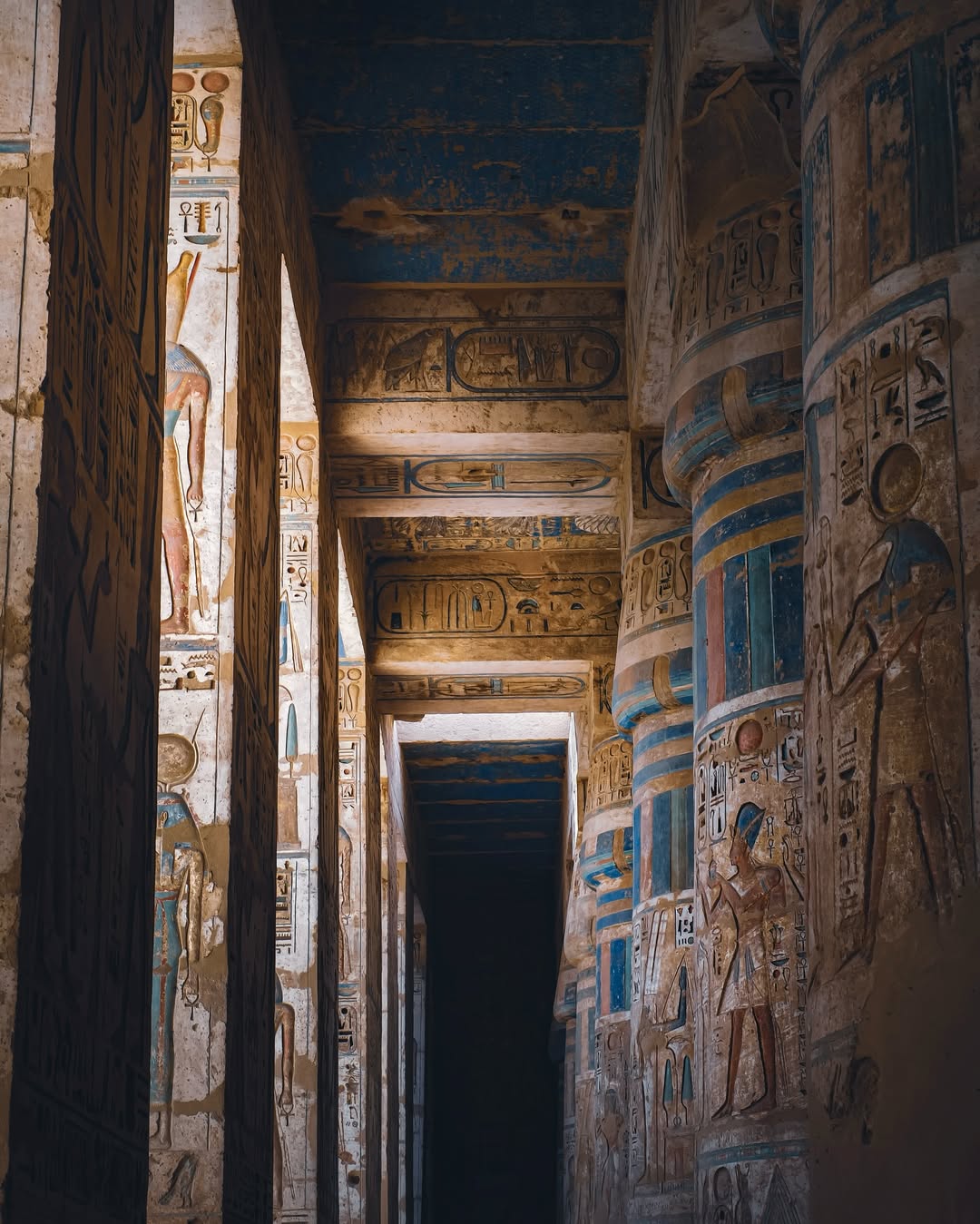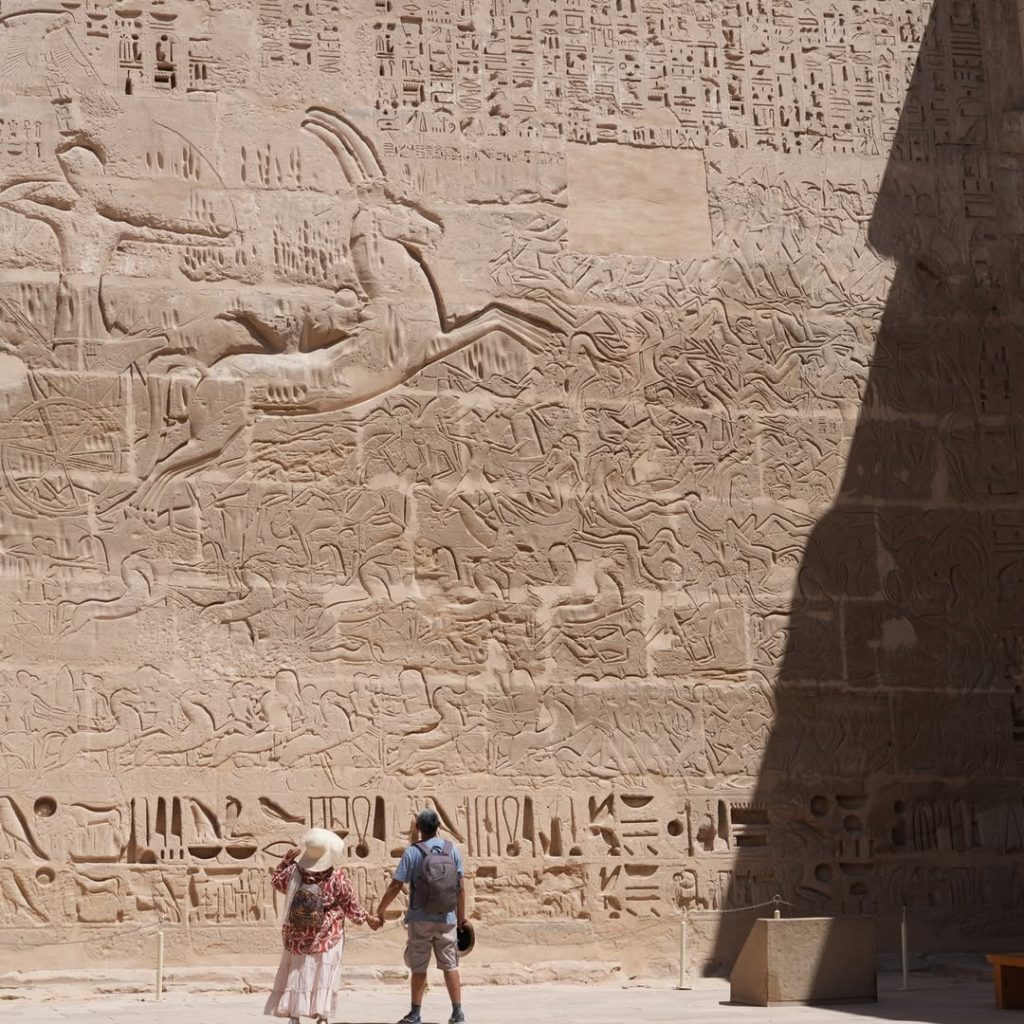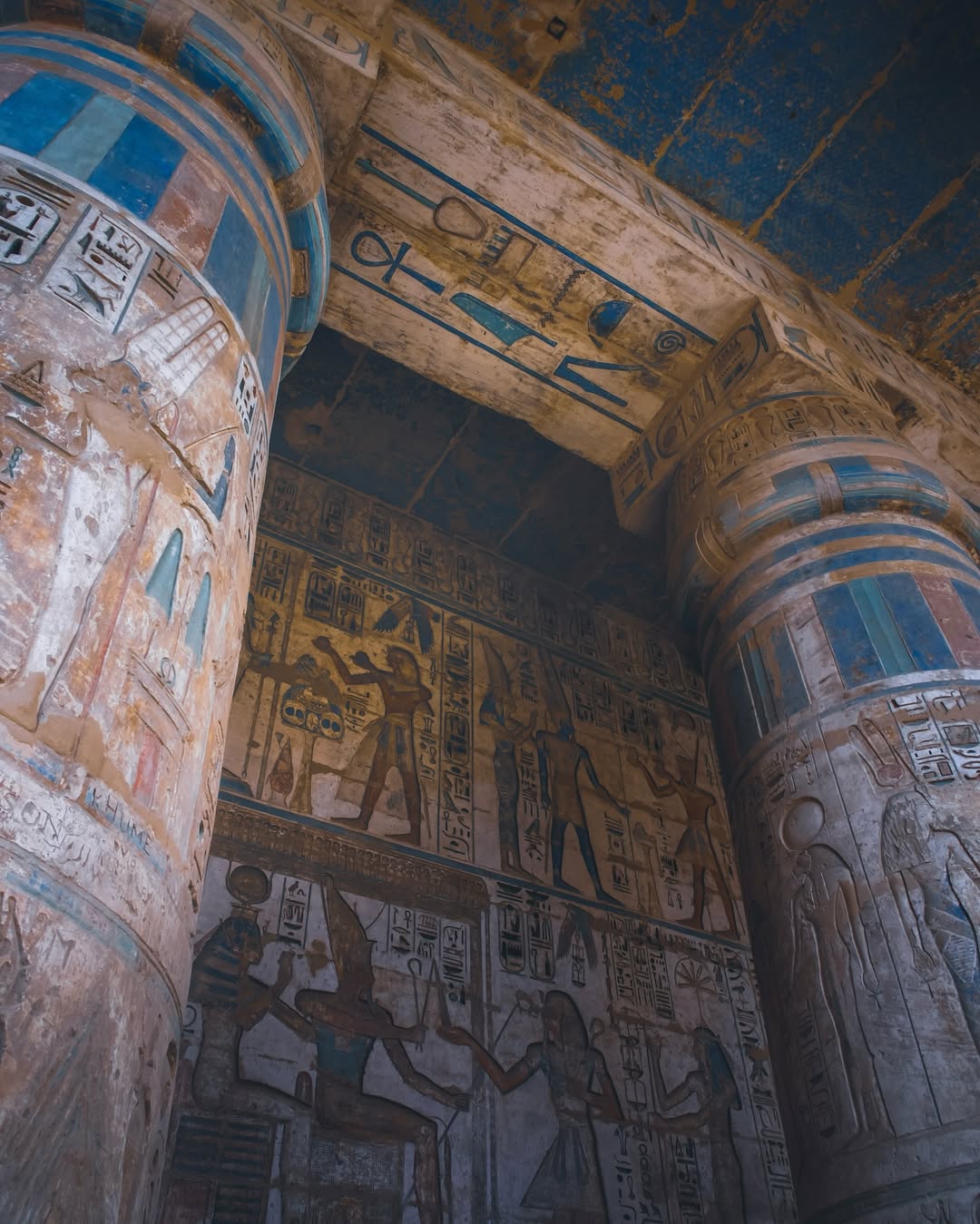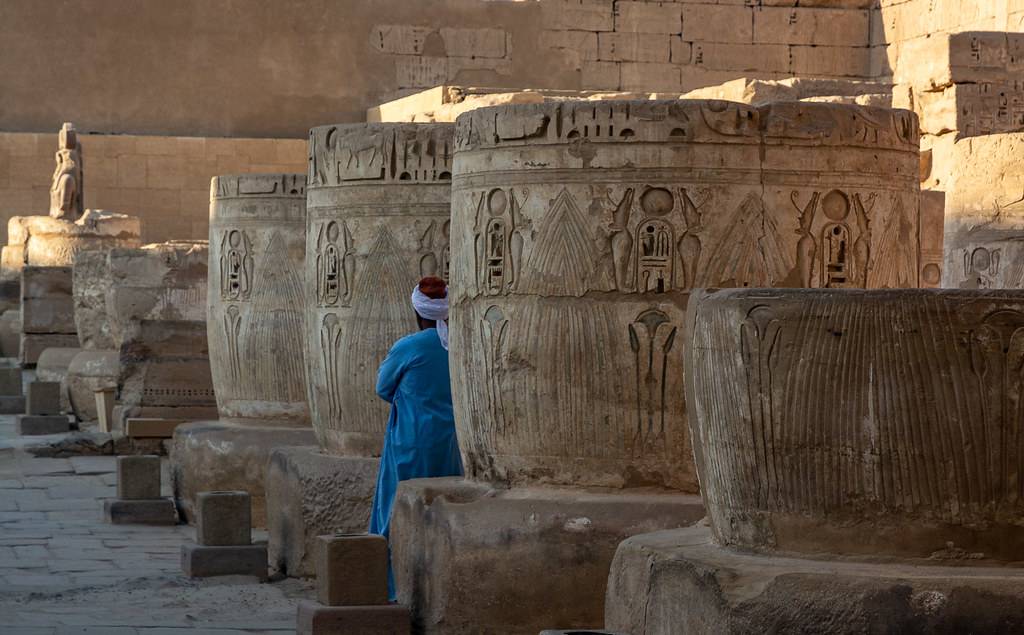Medinet Habu
Mortuary Temple of Ramses III
Imagine you are standing in front of a temple where the walls are vibrant, with huge statues of a pharaoh looming above you, and where the only sound is the gentle wind of the desert. This is not Karnak, where many people take photos, nor is it Luxor Temple, which shines with lights at night. This is Medinet Habu—Ramses III’s fortress-temple on Luxor’s West Bank. Here, history feels very real. You can see the stone carvings of battles against the Sea Peoples, and you might find an entire courtyard all to yourself.

What is Medinet Habu?
Medinet Habu is the mortuary temple of Ramses III, built around 1186–1155 BCE during the 20th Dynasty. It covers over 66,000 square meters and was made for worship and to honor the pharaoh’s legacy.
The complex includes:
– A fortified High Gate, inspired by Syrian migdol fortresses.
– Large courtyards and halls filled with huge statues.
– A royal palace with the “Window of Appearances,” where Ramses III could show himself to his people.
– Smaller shrines and chapels, including the “Small Temple” of Hatshepsut and Thutmose III.
What makes Medinet Habu special is its great preservation. Many reliefs still have some of their original paint, giving us a rare look at the bright colors of ancient Egypt.
Luxor Tours & Activities
Looking to save some costs on your travel? Why not join a shared group tour to explore Luxor, Egypt? Here are some activities you might be interested in:
The Location of Medinet Habu
The Historical Significance of Medinet Habu
Ramses III, known as the last great pharaoh of the New Kingdom, built Medinet Habu as his “House of Millions of Years.” This site was more than just a temple; it also served as a fortress, a palace, and an administrative center.
The walls display pictures of Ramses III’s battles, especially his famous win against the Sea Peoples. These images provide some of the most detailed military records in Egyptian history.
The temple was dedicated to Amun and hosted rituals to help ensure Ramses III’s eternal life.
Medinet Habu operated like a city within a city. It had granaries, workshops, and housing for priests and workers.
Centuries later, the site became the Coptic town of Djeme, where Christian churches were built over the old pharaonic stone. This shows how Egypt’s history is both rich and evolving.

A Guided Route Through Medinet Habu
To help you enjoy Medinet Habu, here’s a simple walking route with key spots and how long to spend at each:
The High Gate: Enter through the large gate, designed to resemble a Syrian fortress.
Look for the remains of the canal that used to connect the temple to the Nile.
First Courtyard: Admire the huge Osiride statues of Ramses III on the walls.
On the north wall, see the battle reliefs from Year 5 showing the defeat of Libyan invaders.
Second Courtyard: This part of the temple has beautifully painted columns.
On the west wall, find the Year 8 naval battle scenes against the Sea Peoples—some of the most famous reliefs in Egypt.
Hypostyle Halls: Walk among the large columns; many still have traces of paint.
Notice the ceiling stars and star patterns, which connect the temple to the universe.
The Royal Palace: Visit the palace next to the temple.
Look for the Window of Appearances, where Ramses III would present himself to his people.
The Small Temple: Don’t miss this older temple of Hatshepsut and Thutmose III, part of the complex.
It offers an interesting link to earlier dynasties.

Archaeological Highlights: Inscriptions and Campaigns
Medinet Habu is not only beautiful; it is also a historical record carved in stone.
The Year 5 Campaign shows Ramses III defeating Libyan invaders on the north wall of the first courtyard.
The Year 8 Campaign depicts the famous naval battle against the Sea Peoples on the west wall of the second courtyard, detailing ships, archers, and hand-to-hand combat.
The Year 11 Campaign highlights another war with the Libyans, found deeper in the temple, showing the pharaoh’s ongoing military strength.
Topographical Lists are carved records of conquered lands, providing historians with a map of Egypt’s influence during Ramses III’s reign.
These inscriptions make Medinet Habu one of the most important sources for understanding the Late Bronze Age collapse and Egypt’s role in it.

Which Temple in Luxor is Right for You?
Luxor is full of temples, each with its own unique character. It can be hard to decide which ones to visit, but each site has something special to offer depending on what kind of traveler you are.
If you’re visiting for the first time, start with Karnak Temple. It’s the largest religious complex in Egypt. Walking through the Hypostyle Hall with its 134 tall columns is a must-see experience that captures the essence of Luxor. If you want to understand the power of ancient Egypt, Karnak is the place to go.
For those who enjoy evening outings, Luxor Temple is a great choice. Located in the city center, it comes alive at night when floodlights create dramatic shadows against its statues and colonnades. It’s smaller than Karnak, but the nighttime atmosphere is unforgettable.
If you appreciate history, visit the Ramesseum, the mortuary temple of Ramses II. Much of it is in ruins, but the fallen statues and weathered carvings have a haunting beauty that tells a story of time.
For photographers and those who love details, Medinet Habu is a gem. Its walls are filled with bright colors and intricate carvings. Unlike the more crowded temples, you can often explore its courtyards alone, allowing you to take your time enjoying the battle scenes, painted columns, and large statues without being disturbed.

Visiting Medinet Habu: Practical Travel Tips
Best Time to Visit: Early morning for soft light and fewer crowds.
Tickets: Adult EGP 220 – Student EGP 110
Opening Hours:
- Summer Working Hours: from 06:00 am to 05:00 pm
- Winter Working Hours: from 06:00 am to 04:00 pm
- Ramadan Working Hours: from 06:00 am to 04:00 pm
- Getting There:
- Taxi from Luxor city (20–30 minutes).
- Bicycle rental for adventurous travelers.
- Guided tours often include Medinet Habu with

Medinet Habu – Egypt’s Best-Kept Secret
In a city full of monuments, Medinet Habu is unique. It serves as a temple, fortress, palace, and historical archive. Its walls share stories of war, worship, divine kingship, and daily life. Unlike many popular sites in Luxor, you can visit Medinet Habu without large crowds.
If you skip Medinet Habu, you miss one of Egypt’s best treasures. Visiting it lets you enter the world of Ramses III, where the stone walls still tell of the victories and challenges of a civilization that changed history.
When you plan your trip to Luxor, don’t just follow the crowds. Set aside time for Medinet Habu and uncover the temple that Egypt has kept secret for 3,000 years.
Got a Question?
F.A.Qs
Ramses III, during the 20th Dynasty (c. 1186–1155 BCE).
Its exceptional preservation, colorful reliefs, and detailed battle scenes.
Yes—while Karnak is larger, Medinet Habu offers a more intimate, less crowded experience.
Morning, when the light enhances the carvings and crowds are minimal.
Did you know that
By purchasing through our links, you support us at no additional cost.
Thank you for your support. ♥️
